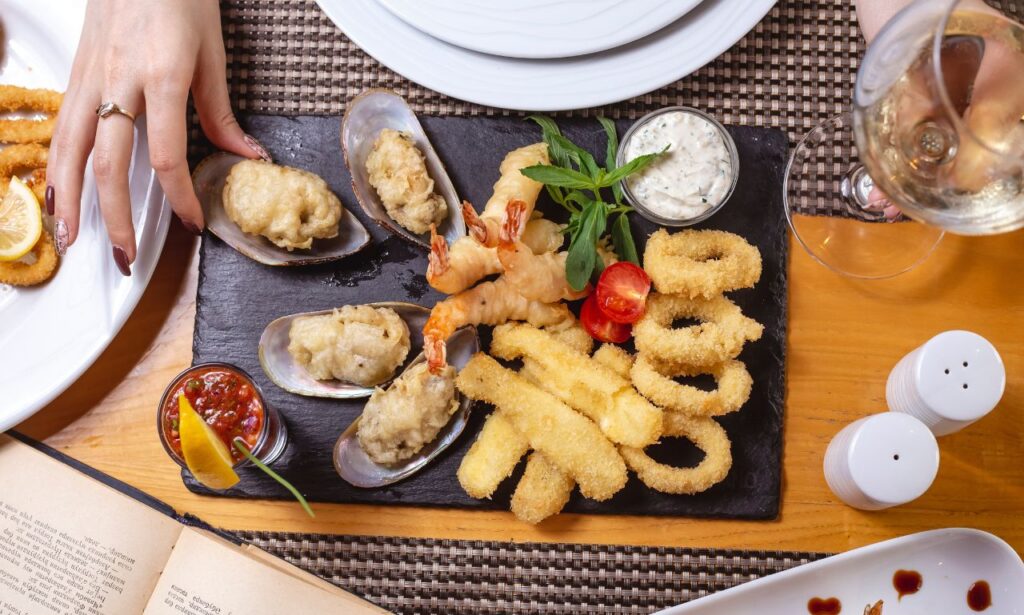Italy’s culinary heritage is rich with traditions that have been passed down through generations. Among these, the figure of the calamariere holds a unique place in the world of seafood and fine dining. Though less commonly known outside Italy, the calamariere plays a vital role in elevating the dining experience, blending service with expertise, presentation with cultural pride.
In this article, we explore the calamariere Italian culinary tradition, its origins, responsibilities, modern relevance, and how it reflects the broader ethos of Italian hospitality. Whether you’re a culinary enthusiast or someone intrigued by food culture, understanding the calamariere opens a fascinating window into the rituals of Italian dining.
What is a Calamariere?
The term calamariere refers to a specialized seafood server or attendant traditionally found in high-end Italian restaurants, particularly those specializing in coastal cuisine or seafood delicacies. Historically, the calamariere was responsible for preparing, presenting, and sometimes even selecting the finest squid (calamari) and other seafood for guests.
Beyond simply serving, the calamariere embodies a tradition of culinary artistry and impeccable service rooted deeply in Italy’s maritime and gastronomic heritage.
The Role of a Calamariere in Italian Dining
The calamariere Italian culinary tradition is more than just a profession; it’s a performance of respect, hospitality, and knowledge. The duties of a calamariere include:
-
Recommending seafood dishes to patrons
-
Preparing fresh seafood at tableside
-
Describing preparation methods and sourcing information
-
Ensuring proper wine pairings with seafood
-
Demonstrating techniques for cleaning or filleting fish
These responsibilities elevate the dining experience, turning a simple meal into a cultural event.
Origins of the Calamariere Tradition
The roots of the calamariere trace back to Italy’s historic coastal regions—places like Sicily, Naples, and the Amalfi Coast—where seafood was central to daily life. In these areas, the calamariere emerged as a symbol of professionalism and culinary excellence.
As Italian gastronomy evolved, so too did the role of the calamariere, moving from humble seafood taverns to the elegant dining rooms of luxury hotels and restaurants.
The Calamariere and Italian Hospitality
Hospitality is a cornerstone of Italian culture, and the calamariere tradition reflects this beautifully. A calamariere is not just serving food—they’re sharing stories, heritage, and passion for Italy’s culinary arts. Their presence embodies the Italian belief that food is not merely sustenance but an experience to be cherished.
Skills Required to Become a Calamariere
Becoming a successful calamariere requires a blend of technical skill, culinary knowledge, and refined etiquette. Common skills include:
-
Expert knowledge of seafood varieties
-
Mastery of seafood preparation techniques
-
Understanding of regional Italian cuisines
-
Proficiency in pairing wines with seafood
-
Strong interpersonal and communication skills
-
Attention to detail in presentation
Training typically occurs through years of experience in professional kitchens and under the mentorship of seasoned calamarieri.
Seafood Specialties Handled by a Calamariere
While calamari (squid) is the namesake focus, a calamariere often handles a wide array of seafood specialties, including:
-
Octopus (polpo)
-
Shrimp (gamberi)
-
Mussels (cozze)
-
Clams (vongole)
-
Lobster (aragosta)
-
Sea bass (branzino)
Mastery of these ingredients is crucial for maintaining authenticity and quality in Italian seafood dining.
The Ritual of Seafood Service
In fine Italian dining, presentation is everything. The calamariere’s duties often include tableside preparations, such as:
-
Filleting whole fish in front of guests
-
Cleaning shellfish with precision
-
Preparing seafood tartare or crudo
-
Presenting dishes with aesthetic finesse
These rituals highlight respect for both the ingredients and the diners, a hallmark of Italian culinary excellence.
Tools of the Trade for a Calamariere
To perform their duties effectively, a calamariere relies on specific tools, such as:
-
Fish knives for filleting
-
Seafood forks and picks
-
Specialized platters for presentation
-
Gloves for handling delicate ingredients
-
Serving tongs and tweezers
These tools aid in maintaining hygiene and enhancing the elegance of service.
Calamariere vs. Sommelier: Similar Roles, Different Focus
Both the calamariere and sommelier share a dedication to specialized service, but while the sommelier focuses on wine, the Calamarista centers on seafood. Together, they represent the height of Italian fine dining service, ensuring harmony between food and drink.
Modern Adaptations of the Calamarista Role
Today, the role of the Calamarista has evolved. While traditional fine dining establishments still honor the practice, modern seafood restaurants adapt these principles into open kitchens, chef’s tables, and interactive dining experiences. The core values—expertise, presentation, and hospitality—remain intact.
How Calamarieri Enhance the Dining Experience
A skilled Calamarista brings added value to any meal by:
-
Educating diners about seafood sourcing
-
Offering insight into regional Italian recipes
-
Providing personalized recommendations
-
Creating memorable dining moments through performance
Such contributions turn a meal into a story worth sharing.
Why the Calamarista is Still Relevant Today
In an era of fast dining and casual service, the Calamarista stands as a testament to the enduring appeal of craftsmanship and attention to detail. Fine dining patrons seek authenticity and connection—qualities the Calamarista delivers through their specialized role.
Regional Variations in the Calamarista Tradition
Across Italy, variations exist in how the Calamarista operates:
-
Northern Italy: More formalized service, focused on freshwater and Adriatic seafood.
-
Southern Italy: Emphasis on Mediterranean seafood and lively tableside preparation.
-
Islands (Sicily, Sardinia): Rich traditions tied to ancient fishing cultures.
These nuances reflect Italy’s culinary diversity and regional pride.
Training and Career Path for Aspiring Calamarieri
Aspiring calamarieri typically follow these steps:
-
Culinary school with a focus on seafood preparation
-
Apprenticeships in reputable seafood restaurants
-
Certification in food safety and hospitality
-
Continuous learning through industry workshops
Career paths may lead to roles such as seafood consultants, restaurant managers, or educators in culinary institutions.
Cultural Significance of the Calamarista in Italy
Beyond dining, the Calamarista symbolizes Italy’s connection to the sea and the importance of preserving culinary traditions. Their work celebrates not just food but also sustainability, heritage, and artistry in service.
Calamarista in Popular Media and Literature
While less common in mainstream media, the Calamarista occasionally features in Italian films and literature as a symbol of elegance, tradition, and culinary artistry—an unsung hero in the world of fine dining.
Conclusion
The Calamarista Italian culinary tradition stands as a proud example of how service, expertise, and cultural heritage can transform a meal into an unforgettable experience. Though perhaps lesser-known internationally, the role embodies the values of Italian gastronomy—respect for ingredients, artistry in service, and deep appreciation for the connection between food and people. As culinary trends evolve, the Calamarista continues to inspire those who value the timeless elegance of Italian dining.






